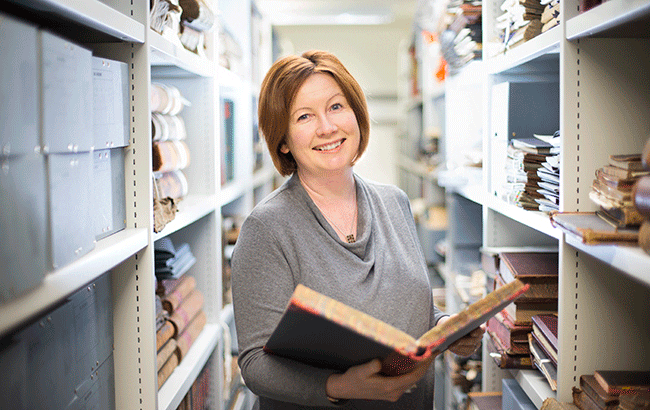SB meets… Carol Quinn, Irish Distillers
By Melita KielyThe head of archives has the vital fascinating job of documenting the most important occurrences at Irish Distillers’ whiskey distilleries. Following the launch of the last drops of liquid from the Old Midleton Distillery – Midleton Very Rare Silent Distillery Collection Chapter 6 – she tells us about the historic road that led to Midleton being as it is today.

*This feature was originally published in the May 2025 issue of The Spirits Business magazine.
When did you learn about the Midleton Very Rare Silent Distillery Collection, and how did you contribute to its formation?
A part of my role as head of archives, I have an oral-history programme. Every year, we set aside a day when we meet with retired members of staff and record their memories. So much of history doesn’t get written down: atmosphere, humour, the jokes. But in one of my first years I interviewed a man called Dennis McSweeney, who worked in the warehouses. He would’ve been there in 1975 when Old Midleton closed, and new Midleton opened. He knew there were casks left behind and he spent two years volunteering in the archive with me.
Now, twice a year, I send a spreadsheet of anniversaries, reminding [the team] of significant dates. Of course, Midleton 2025 has been on our radar for the past 10 years. The obvious thing was the last drops, the last precious liquid. It was a wonderful idea that every year we released a new chapter culminating in the final one.
How does it feel knowing those last drops have been released?
It’s fantastic because they’ve been released almost a generation after they were distilled. It’s reignited interest in Midleton the place, and for a retired community who have such affection for Old Midleton. It’s hopefully opening a new era of interest and respect for Midleton Very Rare.
What has been your favourite part of creating the Midleton Very Rare Silent Distillery Collection?
Being able to share the story because I don’t think people in Ireland, never mind people overseas, realise what a special place Midleton is. There are very few distilleries operational on the actual site they were founded on. It’s not just about the liquid; it’s about the people and community. Think about all the farmers who supplied barley to the distillery. In fact, the distillery being there allowed those farmers to survive, to pass their land to the next generation.
Did anything surprise you while working on this collection?
The global ambition of the founding Murphy family from day one. I hadn’t expected that. We found they were trading internationally before they built the distillery. Even in the early years, they kept up their tea-importation business. They were sailing from Cork directly to China in 1830 – that was incredible. Nowadays, we would be congratulating ourselves on our global outlook. To know that was happening 200 years ago was outstanding.
How has the advancement of technology and social media changed how you document your records?
At the old distillery, almost everything is on paper. It’s not difficult to store paper correctly when you know what you’re doing. But it’s very challenging to protect digital. You need to reduce the amount you record because there’s a sustainability element as well. Digital records impact carbon footprints.
How will future archivists look back on today’s whiskey business?
I’d hope they would see a continuing DNA throughout the generations; that they would be able to see how each generation built on what happened before, and pushed forwards without losing sight of where it comes from. I hope that person doing my job in two or three generations’ time would see continuation in the DNA of Midleton.
Related news
Midleton Very Rare launches 2025 edition
